Ryan Hall's Blog, page 191
January 6, 2017
Why Running and Antibiotics Don’t Always Mix

Photo: Shutterstock.com
Cold and flu season is upon us and inevitably, some of us will end up on antibiotics at some point this winter. The faster we can get through whatever bug it is we picked up, the faster we can get back out to training, right?
Yes, except when we’re talking about a certain class of antibiotics, called fluoroquinolones. Commonly known by their prescription names—Cipro, Levaquin, and Avelox—this group of antibiotics can have dangerous side effects for runners. Specifically, the drugs can weaken tendons, leading to injury and even rupture.
Terzah Becker, from Longmont, Co., knows this all too well. This fall her physician prescribed a round of Cipro for a urinary tract infection, which she willingly took. “Even though I was aware of the implications, I’ve had UTIs progress to kidney infections so I wasn’t going to mess around,” the 44-year old marathoner says.
A few days into her regimen, the mom of two headed to the track with her children to help them fulfill mileage for their 100-mile club. “I was keeping it nice and easy because I’d noticed some stiffness in my calf muscles,” she says. “But then the kids challenged me to a 100-meter race and I went for it.”
Becker felt a frightening sensation—not quite a pop, but she knew something was amiss. “Suddenly I could barely walk,” she says. “I hobbled my way back around the track just to get the kids three miles total. But for the rest of the weekend I was limping. And because of what I knew about Cipro, I knew I needed to go see my doctor.”
Matthew Sedgley, a sports medicine physician at MedStar Ortho and Sports Medicine in Maryland, says that tendons are at an increased risk for injury both during and after a round of fluoroquinolones. “Like any group of antibiotics, these drugs are very useful but also have side effects,” he says. “This is especially true for athletes who might already have some weakness or degeneration of tendons like Achilles or quadriceps.”
Much of the problem, he says, lies in the fact that patients often receive the medications at urgent care or minute clinic-like settings. “Here the physicians don’t know the patients and their activities and so might not share the warnings,” he says. “If I know a patient is a runner, I always tell them to be cognizant of the potential side effects.”
There have been enough complaints about the damage associated with the drug class that the FDA actually strengthened its warnings about it this past summer. The agency added a “blacked box warning” to the antibiotics—its most serious—for their effects on tendons, joints, muscles and nerves. The warning points out that adverse effects can occur anywhere from a few hours to weeks after taking the medications.
Physical therapist Heather North, DPT, of Boulder, Colo., has treated several patients who have suffered tendon damage while on fluoroquinolones over the years. “The drugs destroy the tendons’ ability to regenerate normally,” she explains. “The Achilles is a very typical spot to see the damage because it takes so much force.”
For patients who experience minor damage, North can usually have them back up and running within a few weeks. “But for a full rupture, athletes are looking at losing a good year off running,” she says. “It’s an awful situation.”
RELATED: Are Antibiotics Safe for Athletes?
The Right Course of Action
So what should you do if you are prescribed a fluoroquinolone? You have a couple of options, says Sedgley. “There’s almost always a medication alternative,” he says. “People have allergies to drugs, for instance, and have to make other choices.”
As an educated consumer, it’s important to share that you’re a runner with your physician and ask about alternatives. “This is particularly important if you are on any type of steroids, which in combination with these antibiotics, makes you that much more vulnerable,” Sedgley points out.
In some cases, however, the physician will rule that fluoroquinolones are the best option. The FDA’s new warning suggest that physicians reserve the drugs for cases when no other options are available for acute sinusitis, acute bronchitis and urinary tract infections. The agency stated that the risks generally outweigh the benefits of the medications.
If you find you are prescribed a fluoroquinolone with no other options, bide your time wisely, say both North and Sedgley. “It’s a very individual response, but generally, take it easy,” North says. “Avoid quick movements, bounding and jumping for a while.”
Sedgley agrees. “Most of the risk comes from eccentric movements, when the muscle is fired and lengthened,” he explains. “So downhill running can be a problem.”
If you are concerned, take a couple of weeks to lay low and concentrate on exercises that involve concentric, or muscle shortening, movement. A bicep curl is an example of this type of exercise.
In Becker’s case, a few weeks of downtime did the trick after feeling that ominous sensation at the track. “I got in to see my doctor a few days after the incident, and by then I was walking fine, though my tendon and calf were still both very stiff,” she says. “He probed my tendon and found nothing damaged. This was very reassuring, and he advised me to refrain from running for another week.”
Becker spent a couple of weeks swimming and doing time on the elliptical just for safe keeping, then eased back into running. Both she and her physician felt Cipro was the right course of action, in spite of the tendon scare. “I wouldn’t hesitate to use the drug again if I had a UTI,” she says. “But I’d probably back off running while on it.”
RELATED: Should You Train When You’re Sick?
The post Why Running and Antibiotics Don’t Always Mix appeared first on Competitor.com.
9 Great Running Books You Should Be Reading Right Now
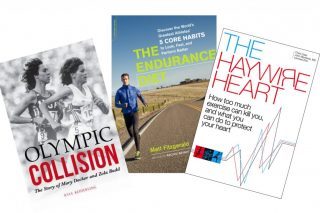
Looking for a good book to start the new year? Here are some of the best running books of 2016 and a few new ones released in 2017.
RELATED: The 25 Greatest Running Books of All-Time
Photo Gallery
1 of {count}
Back to Start
View Larger Image
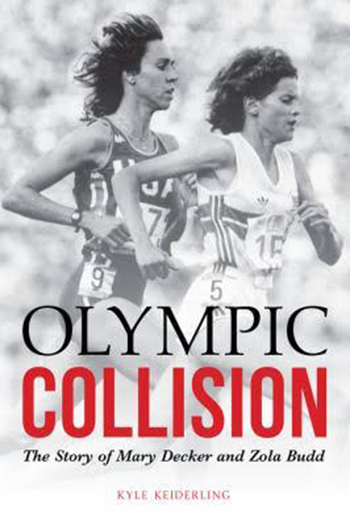
Olympic Collision: The Story of Mary Decker and Zola Budd by Kyle Keiderling, $28
More than 32 years after one of the most famous track and field spectacles in history, author Kyle Keiderling tells an invigorating story about the fateful moment that Zola Budd and Mary Decker collided in a 3,000-meter race on the track at the 1984 Olympics in Los Angeles and the saga that unfolded afterword. It's a fascinating read for any track fan or Olympic history buff, especially at such a key point in the rise of women's running in the U.S. and around the world.
View Larger Image

The Endurance Diet: Discover the World's Greatest Athletes' 5 Core Habits to Look, Feel and Perform Better by Matt Fitzgerald, $17
Matt Fitzgerald has spent two decades studying the diets of elite athletes, and in that time, he has identified five core habits they use to attain optimal health and performance: eat everything, eat quality, eat carbohydrates, eat enough, and eat individually. Whether you want to lose weight, win a race, eat a healthier diet or follow the nutrition regimen like an elite athlete, this book will offer insights into a science-based diet and lifestyle program that will help decrease body fat, get better results from workouts and recover better.
View Larger Image

Shoe Dog: A Memoir by the Creator of Nike by Phil Knight, $29
The story about how Phil Knight and Bill Bowerman started Nike. If you are a sneaker geek or a fan of business books, this memoir falls somewhere in between. It's a compelling read full of insight, humor and entrepreneurial spirit. It tells the story of how a boot-strapped start-up idea became the world's largest athletic footwear and apparel company, and one of the world's top marketing superpowers.
View Larger Image
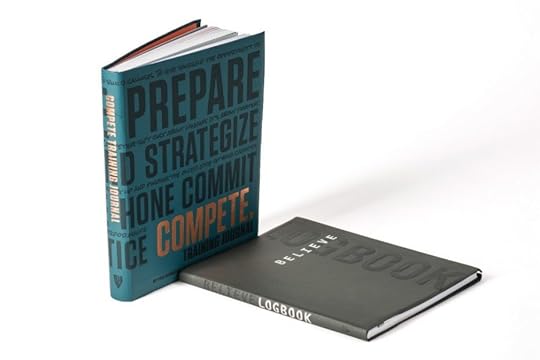
Complete Training Journal and Believe Logbook by Lauren Fleshman and Roisin McGettigan-Dumas, $21 and $18
The latest works from motivational runners/writers Lauren Fleshman and Ro McGettigan-Dumas, the "Compete Training Journal" focuses on high-end performance while the stripped-down "Believe Logbook" is aimed at helping runners stay on track and offer accountability to complete daily, weekly and monthly workout regimens.
View Larger Image

The Born Again Runner: A Guide to Overcoming Excuses, Injuries, and Other Obstacles―for New and Returning Runners by Pete Magill, $19
For runners who have lost fitness at some point in life, this is the method to get back in shape again. Pete Magill knows a thing or two about that. As a drug-addled young man, he once found himself in the ER, with his body telling him to give up. Taking up running seemed impossible—but he willed himself to do it anyway. With a new clean-living approach, Magill went on to become one of the fastest masters runners ever and a sought-after coach.
View Larger Image

Grand Trail: A Magnificent Journey to the Heart of Ultrarunning and Racing by Frederic Berg and Alexis Berg, $45
Simply put, this is the most inspirational and breathtaking coffee table book about running ever published. It shares the stunning beauty and raw emotions of ultrarunning, paying tribute to the passion and splendor of the sport and lifestyle while eloquently depicting 13 amazing trail races around the world and profiling 16 of the world’s top ultra-distance athletes (including Kilian Jornet, Scott Jurek and Emelie Forsberg).
View Larger Image
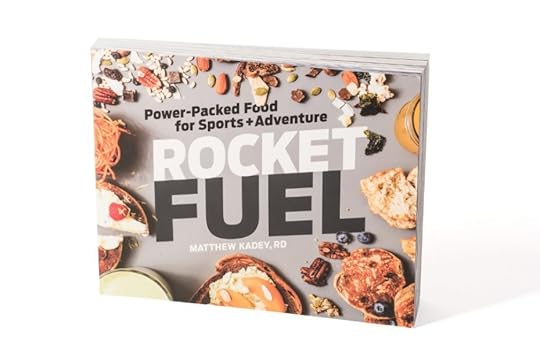
Rocket Fuel by Matthew Kadey, RD, $23
Perfect for the active foodie, this book provides more than 80 real-food, simple fuel recipes for before, during and after a workout.
View Larger Image

The Haywire Heart by Chris Case, John Mandrola, MD, and Lennard Zinn, $25
This book offers a groundbreaking examination of heart conditions in athletes, offering new evidence that going too hard or too long can damage your heart forever. That's perhaps not what a recreational athlete wants to hear as the new year begins (with new event goals in mind), but that's what makes it such a compelling read. It also explains what athletes can watch for and how to protect their hearts while participating in cycling, running, triathlon and other endurance pursuits.
View Larger Image

The River Road by Dennis Barker, $14
The River Road is an evocative novel about becoming a runner at the start of the original American running boom. Set in 1972, Barker, who would go on to become a top U.S. running coach, weaves together hints of his own personal running journey with the American running success of that summer and a bit of the social change happening in the world at the time. A classic coming-of-age story, it’s a compelling read that will appeal to longtime runners, fans of the sport and anyone who appreciates how running can change a life forever.

More Galleries
The post 9 Great Running Books You Should Be Reading Right Now appeared first on Competitor.com.
7 Ways My Dog is a Better Runner than Me
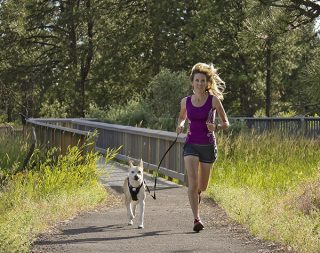
Author Rachel Toor admires the fact that Helen, her most frequent running partner, doesn’t whine about being tired, sore, hungry, cold, hungover or burned out. She just loves to run. Photo: Jon Jonckers
With zillions of marathons and ultras under my belt and PRs long behind me, there are days—especially when the weather is less than perfect and I’m overwhelmed with work, feeling unmotivated and just plain blah—that lying around reading a mystery novel is more appealing than dragging my lazy butt out for a trot.
However, the prospect of disappointing Helen, my four-legged running partner, keeps me lacing up my shoes. She always wants to go and her excitement can be contagious. She reminds me of what matters when it comes to running—that it’s the most basic and elemental of activities, satisfying our animal natures. She’s a natural runner, and in many ways I wish I were more like her. For example:
1. My dog embraces speed work.
Instead of plodding along, Helen knows how to vary her pace. On nearly every run she throws in some intervals to exercise her fast-twitch muscles (SQUIRREL! DEER! The neighbor’s cat!). And then she allows herself adequate recovery, stopping to pee, poop, sniff butts, and roll in things dead and stinky.
2. Though she is super-fast, my dog can accommodate a variety of partners.
When Helen is with someone slower, she’ll log extra miles by running ahead and coming back. She can cover twice the distance of a given route while never completely deserting her partner or making her feel bad.
3. Cross-training is important to my dog.
On trails along the river or near a lake, she’ll dip in and do some laps. Helen is eager to participate in sports like baseball and soccer and will occasionally play Frisbee, even though it’s not her favorite.
4. My dog doesn’t make excuses, complain about injuries, and is never disappointed with her results.
Helen doesn’t care about PRs or placing in her age group. When she came in fourth in the canine division in her first half marathon, she never felt the need to post that news to Facebook.
5. My dog stretches before and after runs.
Upward facing dog, downward facing dog, toe wiggles—she makes sure her muscles are supple and loose during the day.
6. She’s not a ‘gear head.’
Dozens of worn out running shoes don’t clog her closet. Helen doesn’t spend hours discussing the merits of various GPS devices and she doesn’t pile up dirty shorts and T-shirts (and sometimes wear them again before they make it into the wash). No one ever has to wait for her to get ready.
7. Her attitude and habits are winning.
My dog always wants to go; she doesn’t whine about being tired, sore, hungry, cold, hungover, or burned out. She never worries about her weight, eats healthy food, and gets plenty of sleep. For her, running is joyous and celebratory.
And, of course, Helen discovered barefoot running long before Chris McDougall made it a thing.
RELATED: A Guide to Running With Your Dog
About The Author:
Rachel Toor teaches creative writing at Eastern Washington University in Spokane, Wash., and is the author of four books of nonfiction, including “Personal Record: A Love Affair with Running” (2010, Bison Books), and a young adult novel, “On the Road to Find Out” (2014, Square Fish). She is owned by a dog named—you guessed it—Helen.
The post 7 Ways My Dog is a Better Runner than Me appeared first on Competitor.com.
January 5, 2017
Is Your Mental Game Keeping You from a Time Goal?

Photo: Shutterstock.com
For almost three years, 32-year old Amanda Hicks has been trying to break the three-hour mark in the marathon. On several occasions, she’s come within minutes of her goal time, but seemingly no matter what she tries, that barrier remains elusive. “I have a sticky note with curled edges on my refrigerator that says 2:59:59,” she says. “I’m tired of seeing it there.”
For many runners, Hicks’ story is relatable. Setting a particular time goal and then throwing everything you have at it, only to come up short, is a common phenomenon, according to sports psychologist Justin Ross of Denver-based Mind Body Health. “There’s a lot of research on setting a reference point and then having a loss aversion tied to it,” he says. “Marathons, in particular, afford people a crisp, tangible goal to go after.”
There’s nothing wrong with having a goal time, of course, and working toward it. The problem comes with the emotional attachment to it, which sometimes works against you. “Runners place an attachment to the pain of not reaching their goal,” Ross says. “Then if they don’t hit that number, they begin to build it up and start putting pressure on themselves.”
Hicks admits this applies to her. “I know my goal is within reach,” she says. “But sometimes, I start to think that maybe I’m not meant to break three hours.”
In fact, Hicks wonders if she hasn’t self-sabotaged in some of her races. “It feels like around mile 22 or 23, I’ll get stage fright,” she says. “I tell myself I’ll be happy with a slower time and don’t finish it out like I should.”
This in spite of the fact that Hicks has worked on her mental game as hard as her physical. “I read up on the mental aspect of racing before Chicago this year, and felt like my head was there,” she says. “My body was running my race pace without my even looking at my watch. I don’t know what happened.”
Statistics from a 2015 study of marathon times by economists from U.C. Berkley and the University of Chicago show that many runners “cluster” around specific goal times. Big spikes show up in the data on the one hour, half hour, and even 10-minute points, revealing that most runners are aiming for a time-related goal.
Also tracked in the data is the speed runners reach in the final 2.2K. For those close to a round number—likely a goal time—they were often able to summon the mental energy to pick up the pace in an effort to reach it. Runners like Hicks are painfully aware of this, but don’t know how to get to that place.
RELATED: 5 Ways to Mentally Prepare for Your Next Race
What works
Dennis Polmateer, a 33-year-old runner from Denver, has been in Hicks’ shoes, but recently figured out how to change his outcome. “I found I had mental blocks around certain time goals,” he says. “In training, for instance, I found my mind stopped me from running under a 6-minute pace. It was scary to see it on paper and then try to execute it in practice.”
Polmateer says that he couldn’t convince himself that he was fast enough to achieve those paces. “When I started marathons, I was a four-hour runner, so it became nerve-wracking to think I could run sub-sixes,” he explains. “In the marathon, I’d reach the halfway point in PR time, but then tell myself I couldn’t sustain it.”
After too many frustrating races, Polmateer turned to Ross for guidance. “He showed me how I was focused on numbers and perceiving certain paces as a failure,” he says. “He taught me to match my effort to my measure of success.”
In other words, Polmateer learned that he was getting plenty out of his workouts as long as he was putting the effort in, in spite of what the numbers on his watch said. “This was a big one for me,” he admits. “Now I know that I’m not a failure if I don’t hit a certain number.”
One of the issues for runners, says Ross, is learning that not every workout or race is going to go according to plan, and that it’s not a deal breaker. “If you let numbers dictate what you are capable of, you can train yourself not to reach your goal,” he says. “The cool thing is that it’s all about our perceived relationship with numbers, something we can change.”
Ross counsels runners to shift their reference points with goals. “So if your goal is four hours, for instance, shift it to 3:55,” he suggests. “It helps you create a new relationship with numbers.”
He also recommends unplugging from the technology that gives us so much numerical feedback. “Having all this data can create mental blocks,” he says. “It’s important for all of us to leave the watch in the drawer sometimes and get back to enjoying running for running.”
Polmateer readjusted his mental state and ultimately achieved a 2:49 PR at the Twin Cities Marathon. “Instead of worrying about numbers, I had faith in the process,” he says. “I went into my races with a more positive attitude, knowing I wasn’t a failure for not hitting certain times.”
Hicks, in the meantime, isn’t throwing in the towel any time soon and will target this spring’s Boston Marathon for her next attempt at cracking the three-hour mark. Her new approach is similar to Ross’s suggestions for shifting her time goal.
“I’m adjusting my marathon pace to aim for a 2:55 so that 3:00 will be my cushion,” she says. “I don’t know what else to do. I know this is all between the ears.”
RELATED: 7 Traits of Mentally Tough Runners
The post Is Your Mental Game Keeping You from a Time Goal? appeared first on Competitor.com.
New Balance Unveils RunIQ Watch and PaceIQ Headphones
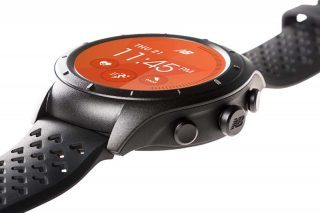
The New Balance RunIQ watch will hit stores on Feb. 1
New Balance has been working behind the scenes for several years with key partners in the digital domain to develop wearable tech products. Today at the Consumer Electronics Show in Las Vegas, it unveiled the RunIQ watch ($300) and companion PaceIQ wireless headphones ($110) that will hit stores in a few weeks.
We had a sneak preview of the RunIQ at The Running Event in December and were impressed with its elegance and simplicity for running and as an everyday watch. The screen and data layouts were simple and easy to see. You can change the watch face color motif to suit your preferences, even to Strava orange, one of the partners in a collaboration with New Balance that includes Intel for the electronics, Google for the Android Wear operating system and Jabra for the wireless headphones.
Class aside (and this is one classy watch) the RunIQ is first and foremost designed to be, as New Balance puts it, “Made to Run,” and a smartwatch “For runners made by runners.”
Beyond its looks and a very competitive price for a full smartwatch with GPS, what makes the IQ a strong, new competitor for runners’ wrists? It has GPS, real time heart rate monitoring, and the usual stats of pace, distance, time, and heart rate with zones. It combines a touchscreen with three buttons for on-the-run operation, including a lap button, for sweaty fingers reliability. Battery life is rated at 5 hours with GPS and HR running and up to 24 hours in typical use, typical stats for Android Wear watches and the Apple Watch. It is also waterproof to 5 ATM, which is fine for surface water swimming and of course rainy day runs.
RunIQ seamlessly uploads workouts to Strava, which essentially is the run stats app for the watch. In parallel with the launch, and in collaboration with Strava, New Balance has also created the New Balance Global Run Club, a digital and physical community to bring New Balance runners together. It will include virtual training programs for key events and races, some of which will be centered in New Balance stores.
If you have an Android phone the RunIQ does far more than just track runs. RunIQ can access thousands of apps from the Google Play store. “OK Google” voice control is built in. It can also be loaded with music, up to 50 hours of Google Play music, and used phone free as a music player with wireless headphones, but only if you have an Android phone. IPhone integration is more basic and like other GPS smartwatches: phone notifications, music control, and some limited voice commands.
The PaceIQ wireless headphones, based on the fine Jabra Sport Pace headphones, are an integral training partner not only for music and calls but also for using the NB RunIQ Sport Button, letting you hear run stats from the watch, even without a phone.
The RunIQ and PaceIQ are available now at newbalance.com for pre-order with a Feb. 1 release date.
RELATED: Innovative New Music and Wearable Tech Gear for Running
The post New Balance Unveils RunIQ Watch and PaceIQ Headphones appeared first on Competitor.com.
German Student’s Adidas Commercial Perfectly Captures the Spirit of Running

German student director Eugen Merher created this moving spec commercial titled “Break Free,” that perfectly captures the spirit of running. In less than a couple minutes and no dialogue, the commercial tells a story about a former marathon runner whose body and soul are decaying in a retirement home, until he finds an old pair of Adidas. The end will certainly have you cheering.
Merher, a 26-year-old student at the Filmakademie Baden-Württemberg, told The Huffington Post that he tried sending it to Adidas’ communications department, but hasn’t heard back.
For now, it’s a feel-good message about how running can never be taken away from us.
The post German Student’s Adidas Commercial Perfectly Captures the Spirit of Running appeared first on Competitor.com.
Picky Bars Collaborates with Elyse Kopecky to Develop New Fuel Products

Photo: @pickybars
A new year means new developments for Picky Bars. The Oregon-based energy bar company founded by professional athletes Jesse Thomas, Lauren Fleshman and Steph Bruce announced a collaboration with Elyse Kopecky to lead new product development. As a graduate of the Natural Gourmet Institute and as New York Times bestselling author of Run Fast, Eat Slow (and an avid trail runner), Kopecky brings an expertise that will help Picky bars to expand into new foods, outside of the nine real food energy bar flavors currently available.
The news was first released on the Picky Bars’ Instagram account yesterday with an official announcement of Kopecky’s title as lead of product development.
A photo posted by Picky Bars (@pickybars) on Jan 4, 2017 at 3:20pm PST
“I knew Elyse from my early Nike days, almost 10 years ago,” said co-founder Lauren Fleshman in a press release. “When Elyse moved to Bend we got to catch up. Hearing her passion for changing the culture around nourishment for athletes, I knew she’d be a great fit for us.”
Fleshman also notes that this new collaboration with Kopecky will be the first step in creating fuel products beyond just the real food energy bars they’ve become known for.
“I love that Picky Bars is built on the same real food ethos that I believe in.” said Kopecky about her new role at Picky Bars. “Athletes need an incredible amount of nutrition to stay healthy. This collaboration enables me to get crafty with some of my favorite ingredients for energy and recovery.”
Picky Bar subscribers can look forward to first tastes from this kitchen collaboration in the coming months.
The post Picky Bars Collaborates with Elyse Kopecky to Develop New Fuel Products appeared first on Competitor.com.
25 Must-Do American Marathons in 2017
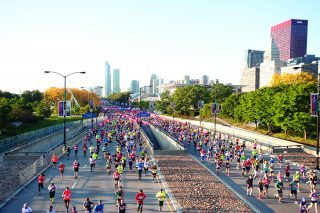

Although half marathons get more attention nowadays, running a marathon is still a very noble pursuit. Whether you’re crossing races off your bucket list, looking to qualify for Boston or earn a PR on a pancake-flat course, there are many races out there just for you. Here are our favorites for 2017—taking place in big cities, small towns and scenic trails.
Walt Disney World Marathon
Jan. 8, Orlando, Fla.
Rundisney.com
What a way to start the year: The Walt Disney World Marathon celebrates its 20th anniversary this year, and the race that first helped popularize the destination marathon/vacation combo is still going strong in 2017. Enjoy a fantasy-filled course that covers four of the Disney World theme parks, including the Magic Kingdom, Disney’s Animal Kingdom, Disney’s Hollywood Studios and Epcot.
Surf City Marathon
Feb. 5, Huntington Beach, Calif.
Runsurfcity.com
Take in California’s longest stretch of uninterrupted beachfront at this annual marathon that celebrates the state’s surfing culture. Comfortable winter temperatures and that view of the Pacific much of the way make this a popular getaway marathon for those in snowy climates—or just about anywhere. Listen to surf bands along the course and realize that all of those cold, middle-of-the-winter long runs were worth it.
Mercedes-Benz Marathon
Feb. 12, Birmingham, Ala.
Mercedesmarathon.com
Experience southern hospitality at its best in this midsize marathon through downtown Birmingham. The two-loop course is offers a nice tour of the city, with trips past the Civil Rights Museum and the University of Alabama Birmingham campus. The course offers a few hills, but nothing too strenuous, and the post-race barbecue will help you with the recovery.
Napa Valley Marathon
March 5, Napa, Calif.
Napavalleymarathon.org
Known as the “biggest little marathon in the west,” the Napa Valley Marathon celebrates its 39th anniversary this year. The point-to-point course highlights the incredible views of the Napa Valley, while race organizers ensure a high-end road racing experience. Enjoy the views of the vineyards along the route, and then spend a few days afterward sampling.
Asheville Marathon
March 13, Asheville, N.C.
Ashevillemarathon.com
If you’ve never been to Asheville, N.C., this race is a great reason to visit the scenic town in the Blue Ridge Mountains. The race takes place on the grounds of the Biltmore Estate, the largest privately owned home in the United States. The chateau-style home, built by George Washington Vanderbilt II in the late 19th century, will amaze you. But the scenic course on the grounds features packed dirt trails, hardwood forests, meadows and formal gardens to explore.
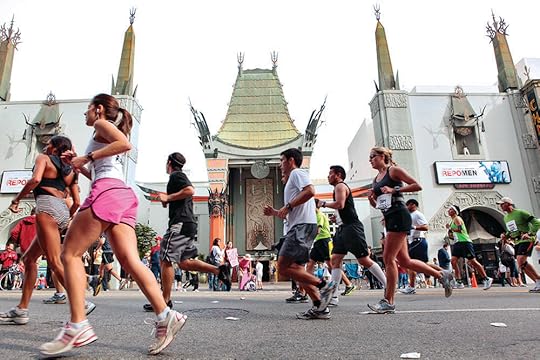
Skechers Performance Los Angeles Marathon
March 19, Los Angeles
Lamarathon.com
This annual Los Angeles race draws more than 25,000 runners from all 50 states to enjoy a scenic point-to-point course that starts at Dodger Stadium and includes many of the city’s landmarks along the way, including West Hollywood, Chinatown, the Financial District and Beverly Hills. The finish line in Santa Monica overlooks the Santa Monica Pier, where you can enjoy a post-race drink as waves roll in across the Pacific Ocean.
St. Jude Rock ‘n’ Roll Nashville Marathon
April 29, Nashville, Tenn.
Runrocknroll.com
Perhaps no city is better known for its music than Nashville, and this 18th annual stop on the Rock ’n’ Roll tour in the Music City offers one of the best chances to combine music and running in the country. Formerly known as the Country Music Marathon, the event features an impressive tour of the city, plenty of local musicians that highlight the diverse music scene and a headliner concert to cap it off.
Cincinnati Flying Pig Marathon
May 7, Cincinnati
Flyingpigmarathon.com
Yes, it’s an odd name—a shout-out to the city’s historical nickname of “porkopolis” when it was a center of agricultural commerce in the 1800s. Cincinnati has changed, but this 19th annual event has long been a favorite of Midwestern runners. You’d be hard-pressed to find a race focused more on the fun surrounding the marathon, and the tour of Cincinnati’s neighborhoods is a great way to see the city. The first half features some climbs, but you’re rewarded with a gradual downhill over the second half.
Capital City Marathon
May 21, Olympia, Wash.
Capitalcitymarathon.org
The capital city of Washington State is home to one of the more popular marathons in the northwest. This will be the 36th year that Olympia hosts this annual marathon, which shows off the downtown with a scenic course filled with rolling hills. After the race, the post-race party continues the celebration of running with food, drinks, music and massages.
Rock ‘n’ Roll San Diego Marathon
June 4, San Diego
Runrocknroll.com
This year marks the 20th running of the race that stated the Rock ‘n’ Roll running series. The original location is still one of the most popular events in the country, and runners will once again get a spectacular tour of San Diego—including Balboa Park, Old Town and other historic neighborhoods—all while enjoying the great music along the way that helped launch the series. If you’re looking for a late spring or early summer event—and there’s also a half marathon and 10K—head to America’s Finest City, where the weather is always perfect and there’s plenty to do.
Lake Placid Marathon
June 11, Lake Placid, N.Y.
Lakeplacidmarathon.com
This small town nestled in the Adirondack Mountains has seen more than its share of sports excellence. The host of the 1980 and 1932 Winter Olympic Games, it’s where speedskater Eric Heiden won five gold medals and the U.S. Hockey team celebrated its Miracle on Ice. The marathon, which starts and finishes at the Olympic Speedskating Oval, offers incredible mountain views the entire route.
The San Francisco Marathon
July 23, San Francisco
Thesfmarathon.com
You don’t find a lot of big-city marathons in the middle of July, but San Francisco’s cooler summer temperatures make this an excellent option for runners looking for a big mid-summer marathon. This year marks the race’s 40th anniversary, and runners will get an excellent tour of one of the country’s most scenic cities, including running across the Golden Gate Bridge. Expect some hills, although the loop course isn’t as tough as it could be.
Air Force Marathon
Sept. 16, Dayton, Ohio
Usafmarathon.com
This annual marathon at the Wright Patterson Air Force Base in Dayton, Ohio, routinely draws more than 15,000 participants from all 50 states. Runners can expect to be treated to a flyover before the race and see pieces of aircraft history along the course—make sure to visit the onsite museum after the race. Because it’s mostly on an Air Force base, you won’t find big crowds along the route, but the volunteer support is excellent.

Twin Cities Marathon
Oct. 1, Minneapolis, Minn.
Tcmevents.org
There’s a reason that the Twin Cities Marathon is known as the “most beautiful urban marathon in America.” The trip between Minneapolis and St. Paul takes full advantage of the many parks in the Twin Cities, and for an urban course you’ll find an incredible amount of green space—filled with fall colors. The downhill finish past the Cathedral of St. Paul and in front of the state capitol is one of the best you’ll find in the U.S.
Chicago Marathon
Oct. 8, Chicago
Chicagomarathon.com
This year marks the 40th anniversary of runners traveling from around the world to Chicago for its flat and fast course in hopes of a Boston-qualifying time—or at least a PR. Each fall the 45,000 participants discover a fun tour of the city’s diverse neighborhoods with huge spectator support the entire way. The loop course starts and finishes in Grant Park, making this one of the logistically easier big-city marathons for out-of-towners.
Portland Marathon
Oct. 8, Portland, Ore.
Portlandmarathon.org
This year marks the 46th running of the Portland Marathon, which has become one of the best races in the Pacific Northwest. Starting and finishing in downtown Portland, the course crosses the Willamette River twice and offers a nice tour of the city, including the scenic riverfront, Old Town and residential neighborhoods. Few marathons offer more giveaways than Portland, with a long-sleeve T-shirt, finisher medal, collectable coin, poster and a tree seedling to plant, among other swag.
Maui Marathon
Oct. 15, Maui, Hawaii.
Mauimarathon.com
This is a great race to plan a ‘runcation’ around, especially because the event will be run a month later in 2017 and in future years to avoid the heat of September. The course starts near the Maui airport on Ho’okele St. in Kahului and sends runners south toward Maalai Bay and from there they head west and run the second half of the race along the sea to the finish line at Kaanapali on the western side of the island. There’s also a half marathon and the fast and fun “Run Forrest Run” mile race the day before to get your competitive juices flowing.
Seven Bridges Marathon
Oct. 15, Chattanooga, Tenn.
Sevenbridgesmarathon.com
Chattanooga, located just across the Georgia border and surrounded by rolling mountains, has become an outdoor Mecca in the southeast. The Seven Bridges Marathon has grown along with the city, and offers multiple river crossings via—yes, seven bridges—over the Tennessee River. Runners will find out why Chattanooga is nicknamed the Scenic City over the course of 26.2 miles.
Marine Corps Marathon
Oct. 22, Washington, D.C.
Marinemarathon.com
The best way to see the nation’s capital is to run the Marine Corps Marathon. Known as the “marathon of monuments,” the race offers more sights than a tour bus as it covers Washington, D.C. It also features the kind of support you’d expect from the U.S. Marine Corps, which has been organizing this race since the beginning.
Toronto Waterfront Marathon
Oct. 22, Toronto, Canada
Torontowaterfrontmarathon.com
Want a race with international flavor that’s still about as easy to do as any American race? The Toronto Waterfront Marathon shows off Canada’s biggest city with a scenic mostly Lakefront course that’s flat and fast. Get that Boston-qualifying time and then enjoy all the city has to offer. The race is very well organized and offers all the amenities of any big-city race in the U.S. Just bring your passport.
New York City Marathon
Nov. 5, New York City
Nycmarathon.org
Along with Boston, the New York City Marathon is one of the most iconic running experiences in the U.S. You start by crossing the Verrazano Narrows Bridge, tour all five boroughs, and finish in Central Park amid overwhelming spectator support throughout the race. It’s a must-do for any runner. However, the toughest part might just be getting an entry—the lottery closes this year on Feb. 17.
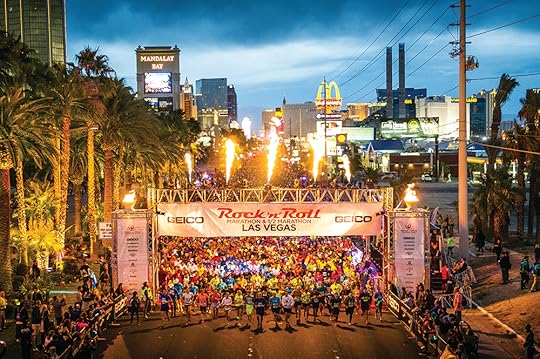
GEICO Rock ’n’ Roll Las Vegas Marathon
Nov. 12, Las Vegas
Stripatnight.com
Viva Las Vegas! The Las Vegas Strip shuts down every fall as runners take over the city at this nighttime marathon that is like no other in the country. In addition to the music along the course, a headliner concert and perhaps the best post-race party around, you’ll also find countless people running as Elvis, getting married, and generally doing things that they hope will stay in Vegas.
Space Coast Marathon
Nov. 26, Cocoa Beach, Fla.
Spacecoastmarathon.com
Florida’s oldest marathon celebrates its 46th running on the east coast of the state near the Kennedy Space Center. The space-themed race includes those running in costume, space props along the course and at aid stations and space shuttle finisher medals. But even if you’re not about to dress up as John Glenn (or Darth Vader), the race offers a very scenic, mostly flat course with fine views of the Atlantic Ocean.
California International Marathon
Dec. 3, Sacramento, Calif.
runsra.org
This fast course in California’s capital has long been known as a favorite for West Coast runners looking to qualify for Boston. The 9,000-person race is solid all-around with great spectators along the scenic course—usually with good weather too. The race prides itself on being organized by and for runners, and it shows.

Honolulu Marathon
Dec. 10, Honolulu
Honolulumarathon.org
If you’re going to do a destination marathon, why not go all in? Who doesn’t want to end the racing season with a trip to Hawaii? The Honolulu Marathon draws 30,000 people from around the world to enjoy the spectacular course and the Oahu’s amenities. Arrive early for the Friday night luau before the race. Stay afterward to recover on the island’s beautiful, famous beaches.
Photos: Courtesy of Chicago Marathon, Courtesy of Los Angeles Marathon, Courtesy of Twin Cities Marathon, Ryan Bethke, Courtesy of Honolulu Marathon
The post 25 Must-Do American Marathons in 2017 appeared first on Competitor.com.
January 4, 2017
Gear We Love: January 2017
From snow-running cleats to energy snacks to an uber-versatile piece of headwear, here’s the gear that we can’t get enough of this month.
RELATED: Cool, New Running Gear, Apparel and Accessories in 2017
Photo Gallery
1 of {count}
Back to Start
View Larger Image
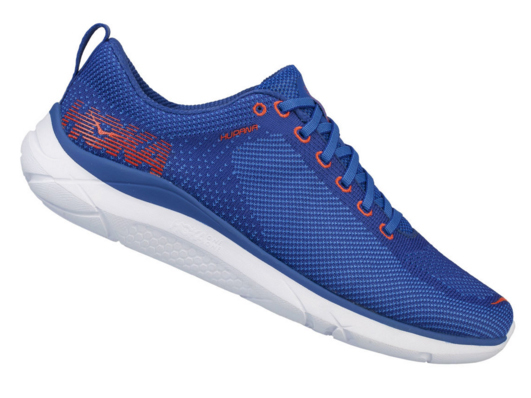
Hoka One One Hupana, $115
One of the latest trends in running shoes is the development of shoes that you can wear for more than just running. The neutral-inclined Hupana was designed to be a shoe that can log modest mileage but also double as an everyday casual shoe. The idea is that you can blend the image and energy of your recreational running life into casual life settings. It’s lightweight (8.2 oz. for a men’s size 9), agile, low to the ground (with a 5mm heel-toe offset), very responsive and, perhaps most importantly for a do-everything shoe like this, it has a clean and stylish two-tone look, thanks to a one-piece knit upper with few additional features on the upper. The bottom line? It runs pretty well for short to medium-length runs and it looks good with jeans.
View Larger Image
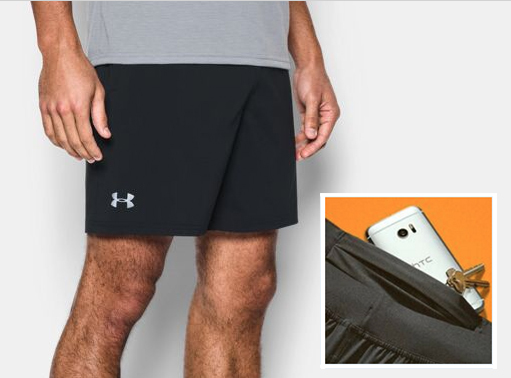
Under Armour Speedpocket 7” shorts, $45
Running with a phone is often a necessary evil, but carrying it in your hand is no fun. Wearing a waistbelt with a pocket can be an easy solution, but these shorts are an even better one. Under Armour has designed shorts with a low-profile, water-resistant front waistband pocket that can comfortably hold a smartphone, keys or energy gels. The pocket has an elastic border, which creates tension to hold items in place. The shorts are made from a four-way stretch polyester, which offers greater mobility and no binding. Two open mesh side pockets come in handy before and after a run. They don’t have a liner brief, so most runners will opt to wear them with compression shorts or running-specific underwear.
View Larger Image

Ultimate Direction SJ Ultra Vest 3.0, $125
Designed with input from trail running legend Scott Jurek, this lightweight pack has loads of smart storage and serves up a comfortable fit with adjustability. Whether you're training for an ultra-distance race, going for a two-hour trail run or fast-packing up and down your favorite peak, this pack can carry a waterproof shell, an extra pair of socks, hat, energy snack and a hydration pack or soft flask bottles.
View Larger Image

Yaktrax Summit traction device, $90
Secured by a Boa Closure System, these rugged winter running crampons provide reliable traction running over frozen roads and trails. Simply place the device on your shoe and tighten the ratcheting dial to secure the stainless steel laces with a custom fit to match the shape of your shoe. They go on and come off easy, making it possible to put them on any pair of running shoes or boots. There are 11 carbon steel spikes under each foot, connected by durable rubber bands and welded stainless steel chain links. It’s a great traction device for conquering all sorts of winter conditions—packed snow, solid ice, slush and even frozen dirt paths.
View Larger Image

Julbo Aerolite Sunglasses, $180
When it comes to running sunglasses, you have to consider how they fit your face, how they perform while sweating and how they react to varying light conditions. These stylish, smooth-fitting and very minimalistic glasses offer an amazing field of vision from lenses that adjust to varying levels of light while blocking the rays.
View Larger Image
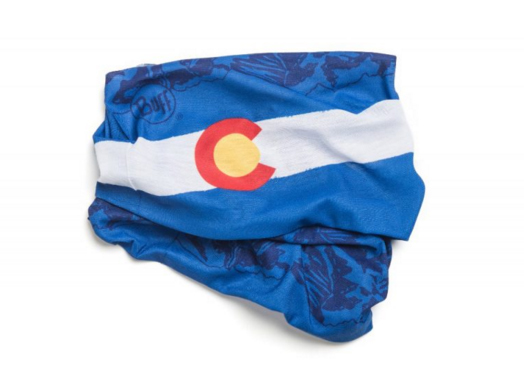
Buff Headwear Colorado Flag, $15
You often need a hat to run in the winter, but often times a traditional knit hat is too warm for running. That’s when a Buff can do wonders. What is a Buff? It’s a versatile and stylish tube of thin polyester that can be configured so it can be worn as a full-coverage hat, a thick or narrow headband and numerous other options. If your head gets too warm while wearing it as a hat, vent your noggin by turning it into a headband.
View Larger Image

Smartwool PhD Run Limited Edition Pattern Crew Socks, $20
Stylish, performance-oriented socks built for the rigors of trail running. Made from a blend of merino wool, nylon and elastic, these socks snugly conform to any foot shape and offer moisture-wicking performance and a friction-free fit.
View Larger Image

Bluprint La Costa Trainer, $129
There is an energetic athleisure movement sweeping the U.S., the notion that you can be both sporty but super chill at the same time. Footwear and apparel brands are combing aspects of athletic style and performance with a decidedly casual look and feel. The La Costa was designed to be a “sport trainer,” a shoe capable of modest easy running mileage and going through the rigors working out at the gym. It’s definitely built like running shoes—including a cushy midsole and a footbed that adapts for a customized fit—But it also has a clean, stylish upper made from micro-perforated ultra-soft suede upper, and pairs great with everyday outfits and jeans. It has a comfortable, foot-shaped design and serves up a natural-flexing ride when walking or running. No, it’s not a long-distance training shoe for half-marathoners, but it can cover 10K pretty well in a pinch. (It’s also an ideal shoe to take on vacation.) The men’s (black) and women’s (black, ocean and salt) versions are similar.
View Larger Image

Wiivv Wearables custom insoles, $69-$89
Finding the right custom insoles (and a custom fit of your shoes) can be tricky. However, with Wiiv Wearables, by stepping on a plain white 8.5” x 11” piece of paper, and using the downloadable app to capture images of your feet, custom orthotics has never been so affordable or easy. Simply snap three photos of your feet, upload them and a few days later you'll have your custom insoles shipped to your door.
View Larger Image
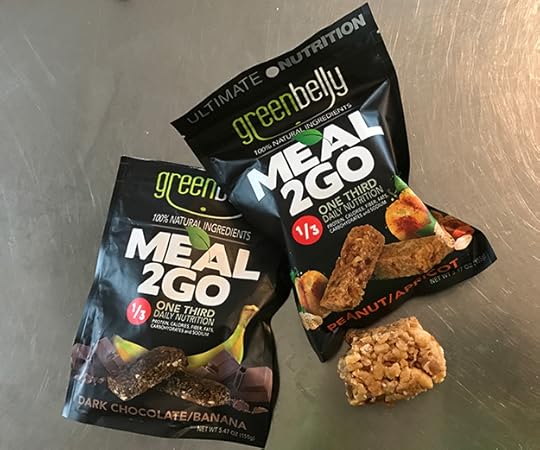
Greenbelly Meal2Go, $23 for 3 or $185 for 30
In 2012, Chris Cage quit his job to spend two years thru-hiking the 2,200-mile Appalachian Trail, touring New Zealand by bike and backpacking through Asia. Being able to consume a proper balance of calories and nutrition that he could carry along with him was a constant struggle, and that led to the development of Greenbelly Meal 2 Go, 5.47-ounce packets of energy bars packed with 645 calories, 100g of carbohydrates, 22g of fat and 17g of protein. In other words, it’s a full, well-balanced meal in a portable (and re-sealable) pouch. These ready-to-eat meal bars are great-tasting, soft and chewy and nutrient-dense, making them ideal for ultrarunners, cyclists, hikers, mountaineers, skiers or anyone who needs to carry their food supply with them on their adventures. We tried all three flavors (peanut/apricot, cranberry/almond and dark chocolate/banana) both while trail running and as lunchtime meal substitutes and were left craving for more.

People's Choice Beef Jerky, $6 for a 2.5-oz. bag
Jerky is all the rage now, given that it makes for a great, portable energy snack chock full of protein. We tried out some of the exotic flavors of People’s Choice Beef Jerky—a third-generation family-owned company from Los Angeles—and loved it as much as an energy snack during long days of running, skiing and hiking as we did as a general daily snack. (The Sriracha flavor was full of spicy zest but not as uncomfortably hot as the name suggests, while the Carne Seca Limon Con Chile and Carne Seca Limon flavor were chock full of savory tanginess.) The jerky products are all handmade, all-natural, gluten-free products that are naturally high in protein—an estimated 16g per serving. (We also love the People's Choice Machaca shredded beef jerky as a protein supplement to salads, eggs and pasta.)

More Galleries
The post Gear We Love: January 2017 appeared first on Competitor.com.
Shoe of the Week: Salomon Snowcross CS
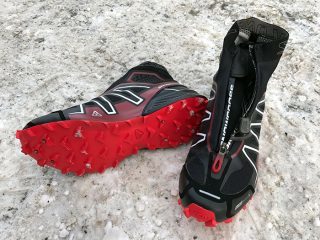
If you live north of the Mason-Dixon line or any place where it snows, you know what a challenge running consistently in the winter can be. When it gets snowy and cold outside, it doesn’t mean you immediately opt for a treadmill or forgo running entirely. If you have a sturdy, spike-infused shoe like the Salomon Snowcross CS, there’s no excuse for hitting the roads or trails for your daily mileage. The shoe is built on a chassis and sticky rubber outsole similar to Salomon’s Speedcross line of shoes. However, it also has nine small but significant carbide-tipped metal spikes in each outsole and a built-in, weatherproof gaiter to keep snow and moisture at bay and ultimately keep your feet dry—and likely warmer. The traction is uncompromising; no matter how your foot lands, flexes or pushes off, there always seems to be several spikes gripping the surface. Salomon’s one-pull lacing system and the zippered gaiter complete a snug, wrap-like fit that aids the shoe’s already stable feel. Although it’s technically considered a trail running shoe, it’s a great tool for running on snowy and icy roads, gravel paths and dirt trails, through deep firm snow, powdery snow drifts and sloppy, slushy conditions too. Although the over-the-ankle gaiter system limits ankle mobility a bit, it’s a reasonable tradeoff for the amazing weather protection it affords. It’s surprisingly light and agile, considering it’s a high-top running shoe.
Price: $200
Weights: 12.9 oz. (men’s size 9.0)
Heel-Toe Offset: 11mm; 31mm (heel), 20mm (forefoot)
Info: Salomon.com
RELATED: Fall 2016 Best Debut—The North Face Ultra MT Winter
RELATED: How to Spike Your Shoes for Winter Running
The post Shoe of the Week: Salomon Snowcross CS appeared first on Competitor.com.
Ryan Hall's Blog
- Ryan Hall's profile
- 21 followers



